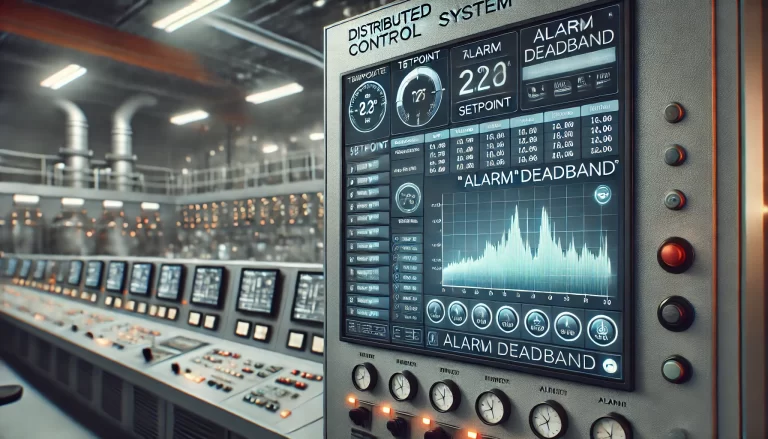When the values displayed by the DCS (Distributed Control System) differ from those shown on the field instruments, it raises concerns about the accuracy of system performance, affecting both safety and operational stability. Here’s a detailed analysis of potential causes and corresponding solutions for this issue:
1. Sensor Malfunction or Failure
Field sensors might experience faults or failures, resulting in inaccurate data. This could be caused by contamination, damage, or aging of the sensor components. A faulty sensor can transmit incorrect values to both the DCS and field instruments.
Solution:
Regularly inspect and maintain field sensors. If the sensor is found to be damaged, malfunctioning, or has aged, replace or repair it as soon as possible.

2. Signal Transmission Interference
During the transmission of signals from field instruments to the DCS, issues like interference, signal attenuation, or distortion might occur. Poor cable connections, grounding issues, or electromagnetic interference (EMI) can contribute to such signal discrepancies.
Solution:
Check the wiring connections between the field instruments and the DCS system. Ensure that the cables are not damaged, and that proper shielding is in place to avoid electromagnetic interference. Grounding should also be checked to prevent potential signal degradation.
3. DCS System Configuration Errors
Errors in DCS configuration settings can lead to mismatches between the actual and displayed values. For instance, incorrect scaling, wrong range settings, or unit mismatches can cause the system to display inaccurate readings.
Solution:
Review the DCS configuration settings, including the sensor range, scaling, and engineering units. Ensure that the setup aligns with the specifications of the field instruments.

4. Instrument Calibration Issues
Field instruments or the DCS system may suffer from incorrect calibration, leading to inaccurate readings. Regular calibration is essential to ensure that both the field instruments and DCS are displaying the correct values.
Solution:
Conduct regular calibration of both the field instruments and DCS system. Ensure that proper calibration procedures are followed, and that the equipment is maintained in optimal condition.
5. Environmental Factors
Environmental conditions such as temperature, humidity, or pressure changes can affect the performance of field sensors. This can lead to discrepancies between the actual values and the ones displayed by the system.
Solution:
Ensure that field instruments are properly rated for the specific environmental conditions in which they operate. If necessary, install protective measures, such as shielding or environmental enclosures, to minimize environmental impact on sensor performance.
6. Signal Delay and Transmission Lag
In some cases, there could be a delay in the signal transmission from the field instruments to the DCS system. This delay may result in discrepancies between the DCS display and the real-time field instrument readings.
Solution:
Evaluate the signal transmission paths for any delays or bottlenecks. If the delay is significant, assess the communication protocols and hardware used for transmitting the data.

7. Signal Conversion and Processing
Signal conversion and processing from analog to digital or vice versa can introduce errors. For example, improper use of signal isolators or converters can cause data inaccuracies in the DCS system.
Solution:
Check the signal conversion devices (such as isolators and transmitters) to ensure that they are functioning correctly and that they are compatible with the instruments. High-precision signal isolators should be used to minimize errors during the signal conversion process.
8. Data Update Rate Discrepancies
The DCS system and the field instruments may not update their data at the same frequency, leading to mismatched values between the two systems. This can happen when one system is updating faster than the other, leading to perceived inaccuracies.
Solution:
Ensure that the data update rates of both the DCS and the field instruments are synchronized. Adjust the refresh rate settings if needed to ensure consistency between displayed values.

9. Voltage Instability
In rare cases, unstable voltage supply can cause anomalous readings in both the DCS and field instruments. If the equipment does not receive the proper voltage, the readings may become distorted.
Solution:
Verify that all equipment is receiving a stable and sufficient power supply. If voltage fluctuations are detected, consider using voltage stabilizers to ensure that all devices operate within their required electrical specifications.

Preventive Measures and Best Practices
To minimize the risk of discrepancies between DCS and field instrument readings, the following steps should be incorporated into standard operational procedures:
Regular Calibration:
Regularly calibrate all sensors, transmitters, and DCS configurations to ensure measurement accuracy.Signal Path Inspection:
Routinely inspect signal transmission lines for signs of damage, wear, or interference. Ensure that proper grounding and shielding are in place.Configuration Verification:
Double-check DCS system configuration, including range settings, units, and scaling factors, to ensure consistency with field instruments.Data Validation:
Periodically cross-check DCS readings against manual measurements to detect potential discrepancies early. This can be done by using portable measuring devices to independently verify field conditions.Environmental Management:
Ensure that instruments are properly protected from extreme environmental factors and are rated for the operating conditions they will encounter.

By following these guidelines, the risk of discrepancies between DCS and field instrument readings can be significantly reduced, leading to more reliable and accurate control system performance.
